by International Crisis Group
What’s new? President Trump’s surprise decision to withdraw U.S. troops from Syria followed previous warnings that he justified their presence only as part of the campaign to defeat the Islamic State (ISIS). Trump said the mission is accomplished, though ISIS remains active in both Syria and Iraq.
Why does it matter? The U.S. has not laid the political groundwork for withdrawal without precipitating new conflicts. Its Syrian partners fighting ISIS, led by Kurdish fighters, will be vulnerable to attack by either the Syrian regime or neighbouring Turkey. The ensuing conflict could have devastating humanitarian consequences and provide ISIS with the chance to regroup.
What should be done? The U.S. needs to press Turkey not to attack the Kurdish-led Syrian Democratic Forces (SDF). It should encourage the SDF to reach a stabilising deal with the Syrian regime, as, in parallel, Russia engages the SDF, the regime and Turkey. More space and time granted by Washington, even if limited, could allow for an orderly U.S. exit.
Overview
On 19 December, days after U.S. President Donald Trump spoke with his Turkish counterpart, Recep Tayyip Erdo?an, U.S. officials announced that the U.S. had begun to withdraw its military forces and civilian personnel from north-eastern Syria. Trump had told Erdo?an that such was his intent, but to most everyone else, the news came as a surprise and, to many, a perilous one: if made precipitously, the move risks leaving chaos in its wake. Washington’s Syrian partners in the fight against the Islamic State (ISIS), led by Kurdish fighters, will be vulnerable to attack by either the Syrian regime or neighbouring Turkey, which considers them terrorists. The ensuing conflict could also provide ISIS with the opening it needs to regroup.
It almost certainly was unwise to commit the U.S. to an open-ended military presence in Syria’s north east, as U.S. officials had previously done. But if the U.S. is to pull out its troops, it should ensure that its partners in the Syrian Democratic Forces (SDF) can survive without them. At this point, the U.S. has not yet laid the political groundwork that would allow it to withdraw responsibly.
As it reaches the final stages of its military campaign against ISIS, the U.S. needs to press Turkey not to attack the Kurdish forces and simultaneously to facilitate a stabilising deal between the Kurdish-led SDF and the Syrian regime. It will not be easy. Talks earlier this year between representatives of Syria’s north east and Damascus stalled after the regime refused to bend on demands for decentralisation and local autonomy. The regime’s negotiating position may become even more inflexible now that the U.S. has announced its departure and thus the guarantee of its military protection is set to expire.
Still, an imminent U.S. withdrawal should drive home the urgent need for a deal – one that restores Syrian state sovereignty to Syria’s north east; moves Syrian forces to the border with Turkey, with Russian backing, thus assuaging Turkish security concerns and forestalling an attack on the SDF; and allows for a degree of Kurdish self-rule. In recent months, the U.S. had not encouraged the SDF to seek such a deal; that posture must now change. The SDF needs the space and time to bargain seriously with Damascus. The alternative could be a military free-for-all resulting from a conflict among the SDF, Turkish and Syrian forces that could have devastating humanitarian consequences and regenerate ISIS.
“Enduring Defeat”
Trump’s decision to pull military forces out of Syria is the latest wild swing in U.S. Syria policy during his presidency, as the U.S. national security staff has repeatedly battled the president’s own instinct to avoid open-ended engagements in the Middle East. Until Trump’s about-face, those officials tied the presence of U.S. troops to ISIS’s “enduring defeat”, which, per their expansive definition, required fundamental change to Syria’s political system and the exit of Iranian-commanded forces from Syria.Now Trump has reasserted himself. “We have defeated ISIS in Syria, my only reason for being there during the Trump Presidency”, he tweeted on the morning of the 19 December withdrawal announcement.
President Trump first made the policy shift – unbeknownst to the State Department or the Pentagon – during a 15 December telephone call with Turkish President Erdo?an. Over the previous month, Turkey had stepped up its pressure on Washington over the U.S. presence in north-eastern Syria. It had become clear to Ankara that ISIS’s “enduring defeat” meant Washington’s continued sponsorship of the SDF and support of an SDF-controlled territorial entity. The SDF is led by the People’s Protection Units (YPG), the Syrian manifestation of the Kurdistan Workers’ Party (PKK), which has waged a decades-long insurgency in Turkey; Ankara accordingly considers it a terrorist organisation and any U.S. support for it intolerable. When the U.S. military established observation posts along the Syrian-Turkish border in late November – to protect Turkey from cross-border infiltration, U.S. officials claimed – Ankara only grew angrier, viewing the move as a hostile act designed to shield its mortal enemy, the PKK.
On 12 December, Erdo?an announced that Turkish forces would intervene in Syria “within days”. This declaration set off alarm bells in Washington. The Pentagon warned that an attack on Syria’s north east would be “unacceptable”. When Trump spoke to Erdo?an on 15 December, U.S. officials expected him to forcefully reiterate that message. He did not. Instead, he shocked his own staff by telling the Turkish president that an attack by Turkey made no sense since the U.S. would be imminently withdrawing from Syria. Summarising the mood among some, a top official, referring to the chaotic U.S. withdrawal from Vietnam decades ago, reportedly commented, “I was not hired to preside over another Saigon”.
Stunning as it was, Trump’s decision should not have come as a real surprise. He has consistently emphasised that his interest in Syria is limited to defeating ISIS. In March 2018, he undercut a previous open-ended commitment to remaining in Syria by declaring, unprompted, that the U.S. would withdraw its forces from Syria “very soon”. In subsequent internal deliberations, he opted to pull out of Syria even at the potential cost of leaving a vacuum that, his aides warned, could be filled by Russia and Iran.
In the ensuing months, Trump’s national security staff – with an assist from French President Emmanuel Macron – convinced him to remain in Syria as part of a regionwide strategy of “maximum pressure” on Iran. But that consideration could only override his hard-wired preferences for so long.
In truth, from the outset the Trump administration’s plan to use the U.S. presence in Syria’s north east to curtail Iranian influence in Syria was both unrealistic (a few thousand U.S. troops were never going to make a discernible difference to Iran’s influence) and impracticable. It also risked inviting a dangerous counter-escalation by the Syrian regime and its allies. The withdrawal announcement arguably solves those potential problems.
But if it might address some problems, it could create another: for all their talk of ISIS’s “enduring defeat”, U.S. officials may have given it a new lease on life. Indeed, if a rushed withdrawal prompts a military free-for-all involving the SDF, Syrian regime and Turkish forces, ISIS could exploit the ensuing chaos to stage a comeback. More broadly, and ironically, by stretching the concept of ISIS’s “enduring defeat” to include an assortment of dubiously related goals over an unlimited timeframe – rather than setting a discrete goal and planning for a managed exit – U.S. officials may have missed the opportunity to secure the counter-ISIS campaign’s gains after a U.S. withdrawal. Instead, they may have set up the U.S. for a sudden, wrenching exit that raises the risk that ISIS’s defeat could be at least partially undone.
Trump’s tweet notwithstanding, ISIS is not yet defeated. It retains a stubborn territorial foothold along the banks of the Euphrates near the border with Iraq, where its fighters have held off the SDF for more than a year. It has underground cells that continue to carry out bombings and assassinations beyond that river enclave in both Syria and Iraq. It also has an unknown number of sympathisers among local communities that the organisation ruled for three years.
Effectively defeating ISIS does not require a long-term U.S. military presence in north-eastern Syria. An ongoing U.S. military deployment could in fact stoke destabilising resentments over the medium term, as the Syrian regime and others encourage loyalists and disgruntled locals to engage in violence and sabotage. Eventually, U.S. forces were going to – indeed should – leave. But this ought to have been preceded by a minimum of preparation. Instead, promises of a sustained presence were followed by the announcement of a swift exit. An abrupt, uncoordinated U.S. withdrawal could expose the U.S.’s Kurdish allies to deadly attack by Syrian regime and Turkish forces, with the ensuing chaos allowing ISIS to make a resurgence.
Kurds Betrayed, Again
The most immediate and troubling effect of the U.S.’s withdrawal announcement is to leave the north east’s residents and the U.S.’s main local ally in the counter-ISIS campaign, the Kurdish-led SDF, in the lurch.
In recent months, the SDF has engaged in talks on future administrative and political arrangements with the Syrian regime, albeit without success. Trump’s March 2018 remarks which suggested the U.S. was leaving had spurred the SDF to initiate talks with Damascus; in July and August, an SDF-linked civilian delegation met with government officials in the Syrian capital. Behind the scenes, Russia also was playing a brokering role. Negotiations quickly reached an impasse, however. Damascus suggested only minor adjustments to local civil administration within the regime’s current structure, while the SDF-linked representatives insisted on negotiations over Syria’s constitution and more substantive decentralisation. Meanwhile, once the Trump administration had (seemingly) decided to remain indefinitely, U.S. officials assured their SDF partners that the U.S. was staying, relieving any pressure to deal. U.S. officials shifted their tone on negotiations with the regime, discouraging the SDF from pursuing talks.
Now, the SDF will need to resume the talks in earnest, albeit from a far weaker bargaining position. Historical YPG/PKK ties with Damascus could help push them forward, but the impasse previously reached demonstrates the wide gap between what the SDF wants and what Damascus is willing to give. That gap must be closed if the two sides are to arrive at a deal that can plausibly forestall a Turkish attack on the SDF.
Both sides have reasons to deal. The SDF undoubtedly has the greater incentive; it is the party facing the prospect of Turkish invasion somewhere along Syria’s long northern frontier. Ankara is justifiably confident that it can crush an SDF deprived of U.S. military support after overwhelming the YPG earlier this year in Afrin, an enclave in Syria’s Aleppo province with more difficult hilly terrain. But Damascus also needs an agreement. Without a deal, the regime risks losing more Syrian territory to Turkey. Syria is still protesting Turkey’s “salkh” (skinning off) of coastal Iskanderun from Syria in 1938. Since 2016, Turkey has seized additional territory in Aleppo to pre-empt the YPG’s westward advance along Turkey’s southern border and deployed Turkish troops to observation points around rebel-held Idlib governorate. It remains unclear how or when Turkish forces will leave. For the regime, a Turkish invasion of north-eastern Syria could mean indefinitely ceding the Syrian territory richest with oil and wheat.
Turkish officials have only limited confidence in the Syrian regime’s ability or willingness to secure Syria’s Turkish border and neutralise what Ankara sees as a YPG/PKK threat. In Afrin, Turkey continued its offensive despite the entry of pro-regime paramilitary units into combat alongside the YPG. Still, the deployment of Syrian army forces along the north-eastern frontier could make Turkey think twice. Turkey may not be prepared to attack the official military forces of its sovereign neighbour, particularly if Russia extended these forces its protection.
The U.S. can play a salutary role in restraining Turkey as the SDF and Damascus negotiate. The U.S. has obvious coercive leverage over Turkey, such as the sanctions it deployed against Turkey to secure the release of detained pastor Andrew Brunson. But the Trump administration has also worked enough to repair bilateral ties with Turkey, including with measures like the Manbij “roadmap” and now the withdrawal from north-east Syria, to have generated some goodwill. Trump should use it to get Turkish agreement not to launch an attack in the north east. After Trump’s announcement, Turkey’s Erdo?an said he would delay any new military action.
Still, it is Russia’s genuine backing of an agreement that would be critical. Russia is well positioned to take into account both Syrian and Turkish concerns in that it supports a return of Damascus’ sovereignty over the entirety of the territory while also having an interest in maintaining strong ties to Ankara. In the earlier case of Afrin, Russia was unwilling to support a merely symbolic regime return that would have left the YPG in effective control and Turkey’s security concerns unaddressed. This time could be different: as Russia did with Israel and Jordan in Syria’s south west earlier this year, it could work toward a solution that genuinely returns the north east to regime control while also meaningfully addressing Turkey’s security concerns. For neighbouring countries with non-existent or dysfunctional relationships with the Syrian regime, indeed, Russia appears prepared to be their interface with Damascus.
Whether Russia will be willing to argue on behalf of the SDF is a more difficult issue. In the south west, Russia has smoothed the return of the Syrian regime: deploying military police, mediating between state authorities and locals, and interceding to secure the release of individual detainees. But it has not stopped the regime in its tracks, or prevented the Syrian state from exercising sovereign control over Syrian citizens.Given its ties to the SDF, Russia is likely interested in arranging preferential terms for it under restored regime authority – but preferential within limits, if the past is a guide.
Still, Russia’s interests would be served by helping Syria’s Kurds. Russia’s chief priority in Syria appears to be restoration of the Syrian state’s sovereignty over the entirety of Syrian territory. It has an incentive to prevent Turkey from taking over more of the country, including the north east, and to broker an arrangement for the SDF that allows the regime to return with minimal violence. In so doing, it could claim to have assisted all three constituencies and thus bolstered its regional position: Syria by allowing it to restore its sovereignty; Turkey by limiting the Kurds’ authority and denying them control of the Turkish border; and the Kurds by avoiding a military attack against them.
Conclusion
A U.S. withdrawal from Syria is not necessarily the wrong decision, or a trigger for lethal conflict; it is the “how” of that withdrawal that is acutely important. While another U-turn cannot be excluded, Trump seems to have set the U.S. on a course toward leaving Syria, but details remain unclear. There may yet be some flexibility on the move’s pace; any additional time, even limited, could allow the U.S. military and coalition allies to prepare an orderly exit.
In whatever time is left, the U.S. needs to do all it can to press and persuade Turkey not to launch an attack on SDF-controlled territory while allowing SDF-Damascus talks to proceed. The SDF fought alongside and on behalf of the U.S. to expel ISIS from its territorial seat, from which it plotted or at least inspired terror attacks worldwide. Abandoning the SDF would have lasting negative consequences for the U.S.’s ability to cultivate counter-terrorism partners; it would also be wrong.
Russia also should use what time it has to ensure the post-U.S. phase does not devolve into chaos. Russia should initiate talks with Turkey, the Syrian regime and the SDF aimed at effecting a transition in north-eastern Syria that would avert a violent free-for-all. This transition will likely require the return of Syrian regime forces to the Syrian-Turkish border as well as a political arrangement leaving Syrian Kurds with a measure of local self-rule.
Republished, with permission, from the International Crisis Group.

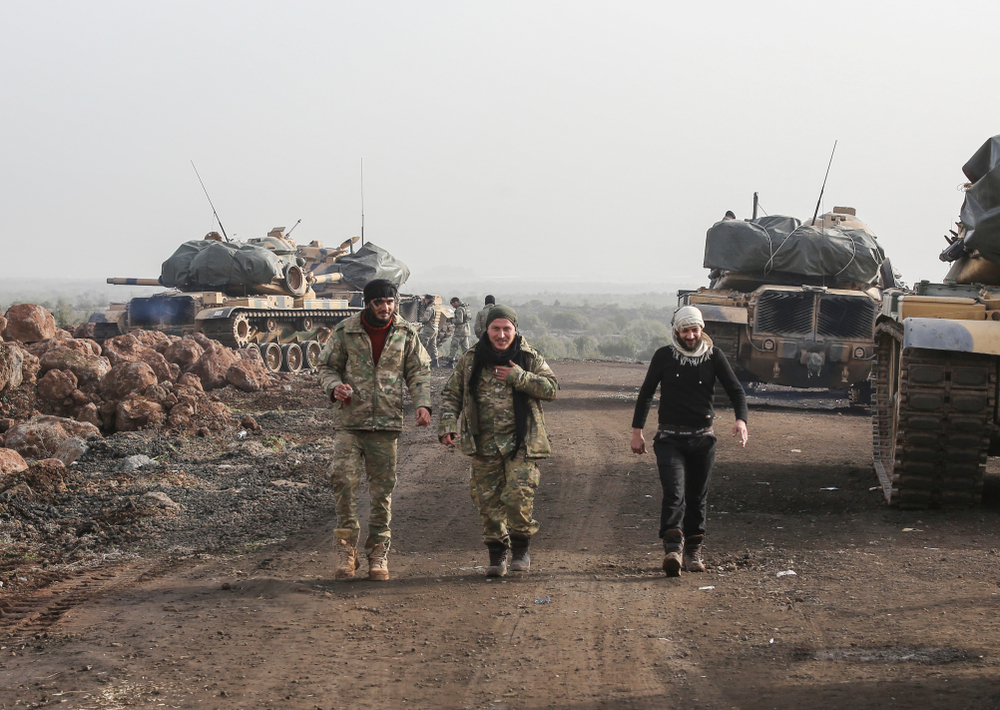
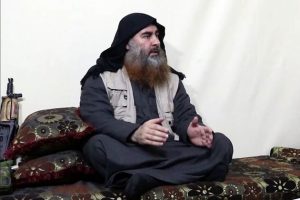
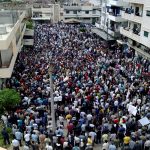
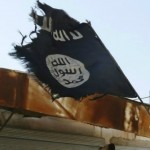
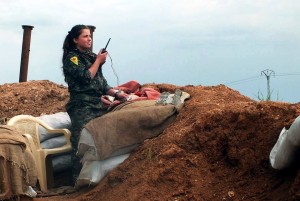
So after this entire ungodly conflict, ensuring the stability of the Syrian regime is now the end goal? America is truly great again, supporting the convenient dictator of the day.